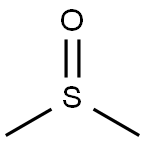Dimeric mercapto propanone
- CAS NO.:55704-78-4
- Empirical Formula: C6H12O2S2
- Molecular Weight: 180.29
- MDL number: MFCD00010121
- EINECS: 259-770-3
- SAFETY DATA SHEET (SDS)
- Update Date: 2024-12-18 14:07:02

What is Dimeric mercapto propanone?
Chemical properties
white to light yellow powder
Occurrence
Reported found in heated pork.
The Uses of Dimeric mercapto propanone
2,5-Dihydroxy-2,5-dimethyl-1,4-dithiane is a useful reactant for the preparation of tetrahydrothiopyranols via a [3+3]-annulation of cyclopropane diesters.
Definition
ChEBI: 2,5-Dimethyl-1,4-dithiane-2,5-diol is a member of dithianes.
Aroma threshold values
Aroma characteristics at 0.10%: eggy, hydrogen sulfide-like, lychee, catty, roasted meaty, vegetative, onion and garlic with chicken brothy nuances
Taste threshold values
Taste characteristics at 2 ppm: roasted meaty, lychee tropical flesh-like, brothy and yeasty, eggy, bready cocoa and tomato-like.
Properties of Dimeric mercapto propanone
| Melting point: | 64 °C |
| Boiling point: | 283.13°C (rough estimate) |
| Density | 1.147 (estimate) |
| refractive index | 1.5390 (estimate) |
| FEMA | 3450 | 2,5-DIMETHYL-2,5-DIHYDROXY-1,4-DITHIANE |
| Flash point: | 47°C |
| storage temp. | Keep in dark place,Inert atmosphere,Room temperature |
| solubility | soluble in Methanol |
| form | solid |
| pka | 12.12±0.40(Predicted) |
| color | White to Almost white |
| Odor | at 0.10 % in propylene glycol. pork lamb chicken savory bouillon onion |
| Water Solubility | slightly soluble |
| JECFA Number | 562 |
| CAS DataBase Reference | 55704-78-4(CAS DataBase Reference) |
| EPA Substance Registry System | 1,4-Dithiane-2,5-diol, 2,5-dimethyl- (55704-78-4) |
Safety information for Dimeric mercapto propanone
| Signal word | Warning |
| Pictogram(s) |
 Exclamation Mark Irritant GHS07 |
| GHS Hazard Statements |
H315:Skin corrosion/irritation H319:Serious eye damage/eye irritation |
| Precautionary Statement Codes |
P280:Wear protective gloves/protective clothing/eye protection/face protection. P302+P352:IF ON SKIN: wash with plenty of soap and water. P305+P351+P338:IF IN EYES: Rinse cautiously with water for several minutes. Remove contact lenses, if present and easy to do. Continuerinsing. P332+P313:IF SKIN irritation occurs: Get medical advice/attention. P337+P313:IF eye irritation persists: Get medical advice/attention. |
Computed Descriptors for Dimeric mercapto propanone
| InChIKey | NHKIYYMFGJBOTK-UHFFFAOYSA-N |
New Products
Tert-butyl bis(2-chloroethyl)carbamate 4-Methylphenylacetic acid N-Boc-D-alaninol N-BOC-D/L-ALANINOL 3-Morpholino-1-(4-nitrophenyl)-5,6-dihydropyridin- 2(1H)-one Furan-2,5-Dicarboxylic Acid Tropic acid 1,1’-CARBONYLDIIMIDAZOLE DIETHYL AMINOMALONATE HYDROCHLORIDE R-2-BENZYLOXY PROPIONIC ACID 1,1’-CARBONYLDI (1,2-4 TRIAZOLE) N-METHYL INDAZOLE-3-CARBOXYLIC ACID (2-Hydroxyphenyl)acetonitrile 4-Bromopyrazole 5-BROMO-2CYANO PYRIDINE 5,6-Dimethoxyindanone 5-broMo-2-chloro-N-cyclopentylpyriMidin-4-aMine 2-(Cyanocyclohexyl)acetic acid 4-methoxy-3,5-dinitropyridine 2-aminopropyl benzoate hydrochloride 1-(4-(aminomethyl)benzyl)urea hydrochloride diethyl 2-(2-((tertbutoxycarbonyl)amino) ethyl)malonate tert-butyl 4- (ureidomethyl)benzylcarbamate Ethyl-2-chloro((4-methoxyphenyl)hydrazono)acetateRelated products of tetrahydrofuran








You may like
-
 2,5-Dimethyl-2,5-dihydroxy-1,4-dithiane CAS 55704-78-4View Details
2,5-Dimethyl-2,5-dihydroxy-1,4-dithiane CAS 55704-78-4View Details
55704-78-4 -
 1975-50-4 98%View Details
1975-50-4 98%View Details
1975-50-4 -
 2-HYDROXY BENZYL ALCOHOL 98%View Details
2-HYDROXY BENZYL ALCOHOL 98%View Details
90-01-7 -
 2-Chloro-1,3-Bis(Dimethylamino)Trimethinium Hexafluorophosphate 221615-75-4 98%View Details
2-Chloro-1,3-Bis(Dimethylamino)Trimethinium Hexafluorophosphate 221615-75-4 98%View Details
221615-75-4 -
 61397-56-6 CIS BROMO BENZOATE 98%View Details
61397-56-6 CIS BROMO BENZOATE 98%View Details
61397-56-6 -
 14714-50-2 (2-Hydroxyphenyl)acetonitrile 98+View Details
14714-50-2 (2-Hydroxyphenyl)acetonitrile 98+View Details
14714-50-2 -
 118753-70-1 98+View Details
118753-70-1 98+View Details
118753-70-1 -
 733039-20-8 5-broMo-2-chloro-N-cyclopentylpyriMidin-4-aMine 98+View Details
733039-20-8 5-broMo-2-chloro-N-cyclopentylpyriMidin-4-aMine 98+View Details
733039-20-8
Statement: All products displayed on this website are only used for non medical purposes such as industrial applications or scientific research, and cannot be used for clinical diagnosis or treatment of humans or animals. They are not medicinal or edible.